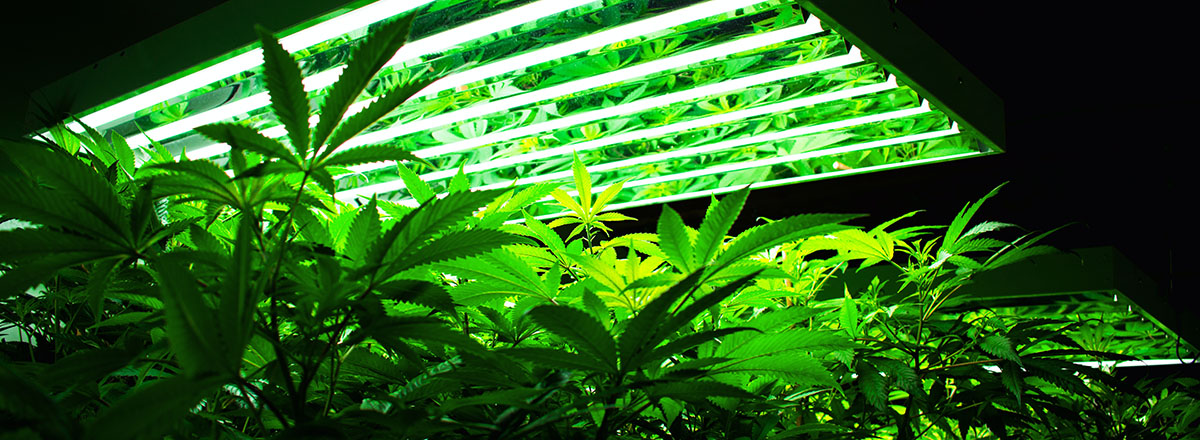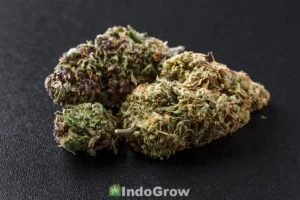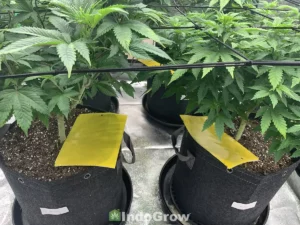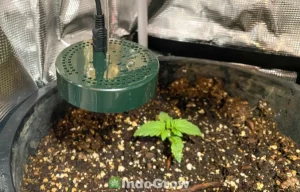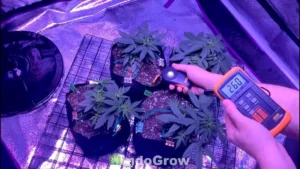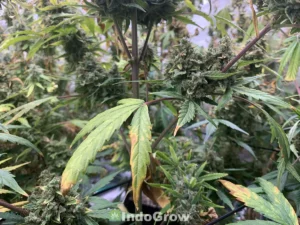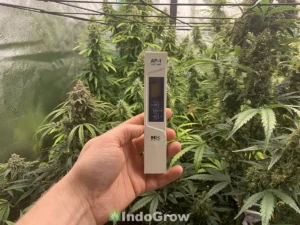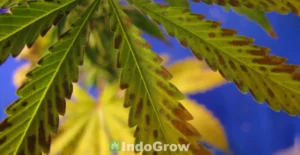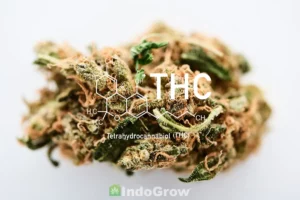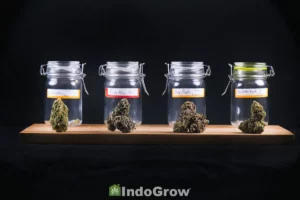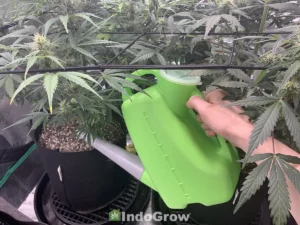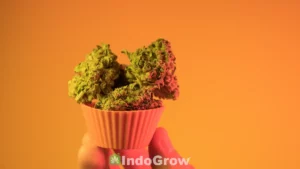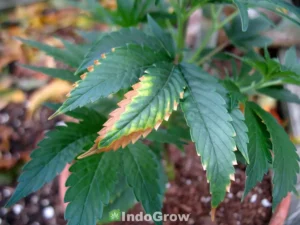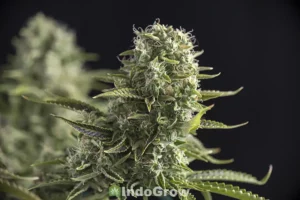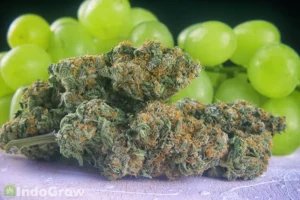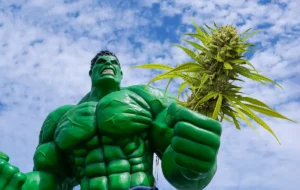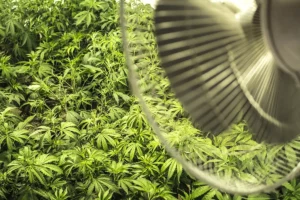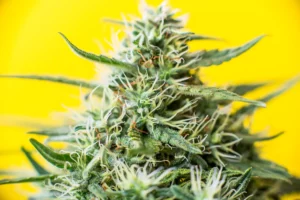Cannabis plants are notorious for their high lighting needs, so picking the best photoperiod or autoflower light schedule for weed is essential for a large, high quality harvest.
Growing cannabis indoors involves using artificial lighting to mimic the conditions that cannabis would grow in in the wild. This article will explain how to set up the perfect lighting schedule for your photoperiod or autoflower cannabis plants from germination to harvest.
Table of Contents
- Why Light Schedule is Important for Cannabis
- What Happens During the Light Period?
- What Happens During the Dark Period?
- Best Grow Lights for Cannabis
- Light Schedule for Seedling Stage
- Photoperiod Light Schedule for Vegetative Stage
- Photoperiod Light Schedule for Flowering Stage
- Best Autoflower Light Schedule
- Best Light Distance/Height for Cannabis
- Best Light Intensity for Cannabis
- Summary
Why Light Schedule is Important for Cannabis
In order to successfully grow cannabis, the plants must be put on a schedule with certain amounts of light and darkness each day. Cannabis plants have evolved to use lighting as an important cue in their development. In the wild, the color, intensity, and duration of natural light change month to month, and indoor grows are often set up to mimic these natural changes as closely as possible, especially for photoperiod strains.
As seedlings, cannabis plants prefer moderate amounts of cool spectrum light. Once they reach the vegetative stage, the plants need lots of light to grow larger, and typically have only a few hours of darkness per day. Finally, lighting is cut back at the start of the flowering stage to mimic the start of fall and induce flowering.
What Happens During the Light Period?
While the grow lights are on, cannabis plants are photosynthesizing. During this essential process, the plant uses energy from light to transform carbon dioxide and water into oxygen and sugars. The vast majority of the cannabis plant’s energy and mass is produced through photosynthesis and carbon fixation, so the importance of giving your plant enough light cannot be understated.
During the light period, your grow lights will also be producing heat. A combination of exhaust and oscillating fans will be needed to remove hot, stale air and circulate fresh air past the cannabis plant’s leaves. While fresh air is important day and night to keep mold from building up, it is especially important during the day when heat from the grow lights can quickly build up and potentially damage your plants.
What Happens During the Dark Period?
During the dark period, photosynthesis will pause for the night. While the lights are off, plants will take in oxygen and release CO2 in a process called cellular respiration. Plants consume less water at night, since temperatures are lower and the plant is doing less internal work.
Similar to humans, having a period of darkness is essential for your plant to rest and recover from the day. Cannabis grown in 24 hour light may grow very quickly at first, but the plant will eventually become more fragile and susceptible to wilting and disease from working all day with no time to recover. For this reason, at least 6 hours of darkness per day are recommended even during the vegetative stage of growth.
Fans should still run throughout the night to keep the air in your grow tent fresh. The plants appreciate a small dip in temperature when the lights turn off for the night, as long as temperatures stay above 60F.
Best Grow Lights for Cannabis
The three main types of lighting used for growing cannabis indoors are fluorescent, halide, and LED. While each light has potential benefits and drawbacks, LEDs are quickly becoming the most popular option for home growers.
Fluorescent lights are mostly used during the seedling stage, since they are relatively cool spectrum and produce very little heat. CFL bulbs are inexpensive and can be placed just a few inches from the seedlings. Cool spectrum LEDs are also a great choice for seedlings, although they must be placed further from the seedlings.
For vegetative plants, most growers use either halide or LED lights. While halide lights may produce slightly larger yields than LEDs, they also produce far more heat, and can be a major fire hazard if installed improperly. In small grow rooms or tents, LEDs also tend to be more cost effective both to buy and to run. Unlike Halides, which need specialized fixtures, LED bulbs have far simpler fixtures and can be plugged into standard wall outlets.
Some modern LEDs offer additional features, such as being dimmable, having an adjustable color spectrum, or being controllable from your smartphone. Although the initial setup price for these bulbs can be high, they offer far greater control over your grow compared to more conventional bulb options, and can often be adjusted for use in every stage of growth instead of swapping out bulbs partway through.
Light Schedule for Seedling Stage
During the seedling phase, photoperiod and autoflower strains can be treated the same. They should receive 18 hours of light per day, followed by 6 hours of darkness. Seedlings are particularly sensitive to heat, so a CFL or LED bulb that does not put out too much heat is a good choice. After about 2 weeks, the seedlings will progress to the vegetative stage.
Photoperiod Light Schedule for Vegetative Stage
During the vegetative stage, photoperiod strains should be kept on the same schedule of 18 hours of light to 6 hours of darkness. Anything between 16-20 hours of light per day is likely to be acceptable, as long as you keep the schedule consistent day to day.
More than 20 hours of light per day is not recommended, as it can cause the plants to become stretched out, dried out, and more susceptible to pests. Keeping the lights on 24/7 will not increase yields and may even decrease them by producing a less robust plant.
Photoperiod Light Schedule for Flowering Stage
Approximately 10 weeks after germination, your cannabis plants will be ready to enter the flowering stage. Since photoperiod plants rely on lighting cues to know when to flower, you must change their lighting schedule from 18/6 to 12/12. This change in lighting simulates autumn for the plant and lets it know that it is time to flower.
Flowers should begin appearing within two weeks after changing the lighting schedule. At this point the plant’s growth will dramatically slow down as it focuses on producing flowers. Flowering cannabis plants prefer warmer spectrum light, although using the same lighting for vegetative and flowering is usually not an issue.
Best Autoflower Light Schedule
Similar to photoperiod plants, autoflowers generally do best on an 18 on 6 off lighting schedule. Unlike photoperiods, you will not need to change the lighting schedule to stimulate flower growth. As the name suggests, autoflowers will automatically begin flowering a certain number of weeks after germination, so their lighting needs during flowering are the same as during vegetative growth.
Some growers will keep the lights on 24 hours a day to speed up growth. Autoflowers have a shorter growing period than photoperiods and are not reliant on lighting cues to develop properly. However, this method is not recommended since autoflowers can still experience negative effects from excessive lighting such as becoming too hot or too dry.
Best Light Distance/Height for Cannabis
Light distance recommendations are the same for both photoperiod and autoflower plants, and vary depending on the age of the plant and the intensity and style of the bulb. The best way to determine light distance is to measure the PAR levels at the top of the canopy with a PAR meter.
Lights should be furthest from the plant during the seedling stage, and move closer in both the vegetative and flowering stages. Lower wattage bulbs should be closer to the plant than high wattage bulbs. For instance, a 200 watt LED could be placed 12-20 inches from a vegetative plant, while a 1000 watt LED could instead be placed 36-46 inches from a vegetative plant.
Most grow bulbs will list a recommended distance from the plant on the package or on their website. It is important to check for this information, since even two bulbs of the same wattage may list different recommended heights due to differences in bulb shape or heat output.
Once you place a bulb in your grow area, hold your hand above the top of the plant for a few seconds. If your hand feels uncomfortably hot or painful, the bulb is too close and may burn your plants. If your hand feels cool, you may be able to move the bulb closer to the plant, although bulbs placed too close to the crown of the plant may not spread their light out far enough to illuminate the entire plant.
Best Light Intensity for Cannabis
Lighting intensity recommendations are the same for both photoperiod and autoflower cannabis plants. Finding the optimal light intensity for your plants is essential for a high quality grow.
Too little light, and the plants will become leggy, while too much light can cause burning on the leaves. The best way to determine light intensity is to measure the PAR levels at the top of the canopy with a PAR meter.
Lighting intensity can be measured using either Lumens or Lux. Lumens measure the light emitted from the bulb, while Lux measures the light falling on a surface, such as the leaves of the cannabis plant. For this reason, Lux is a more useful measure of light intensity in cannabis grows.
Ideal lighting intensity is around 40,000 Lux for vegetative plants and 60,000 Lux for flowering. In comparison, sunny outdoor lighting usually falls between 10,000 and 100,000 Lux depending on season and time of day. It can be measured using a Lux meter.
Besides the amount of light, light color is another important consideration. Plants can photosynthesize using light in the range of 400-700 nm. Seedlings and vegetative plants prefer blue phase light around 460 nm, which encourages shorter, bushier growth. Young plants grown in redder light may become overly stretched out.
In comparison, flowering plants prefer red phase light of around 660 nm. This color simulates lighting conditions in fall and encourages larger bud growth.
Summary
Finding the perfect balance between light and dark is essential to growing healthy cannabis plants. During the day, seedlings and vegetative plants need about 18 hours of quality lighting to photosynthesize and grow larger. Equally essential are the 6 hours of dark, which allow the plants to cool off and recover from the work of the day.
In the flowering stage, the needs of autoflowers and photoperiod plants diverge. While autoflowers will begin flowering a set number of days after germination, photoperiod plants must be coaxed into flowering by lowering their lighting hours to 12 hours on and 12 hours off.
Besides hours on and off, bulb height, light intensity, and light color are important factors to consider in your grow. Lighting intensity should increase in each stage of development, and distance between the top of the plant and the light should decrease. Additionally, seedling and vegetative plants prefer blue light between 400-500 nm, while flowering plants prefer red light between 600-700 nm.
To learn more about lighting, check out the Best LED Lights for Weed.

Rocky Horton
Author
Rocky Horton is an experienced cannabis grower and the founder of IndoGrow. The IndoGrow editorial team has over four decades of combined growing experience. Learn more.

